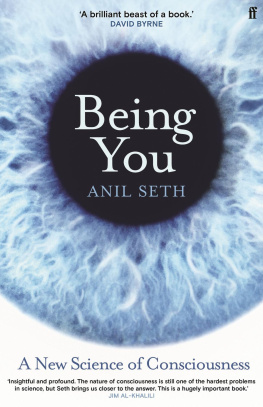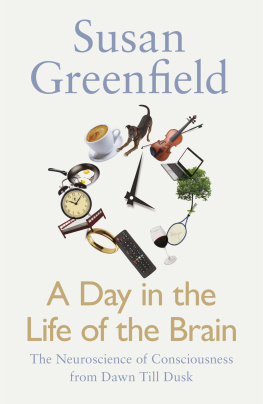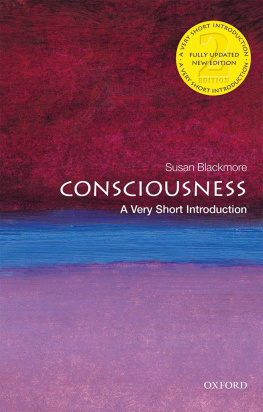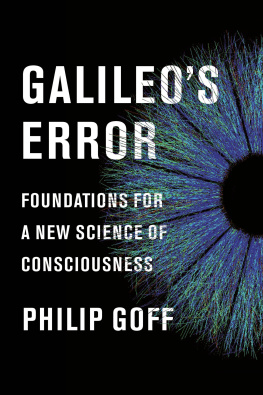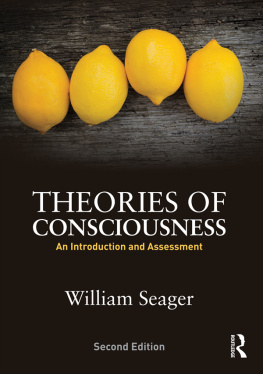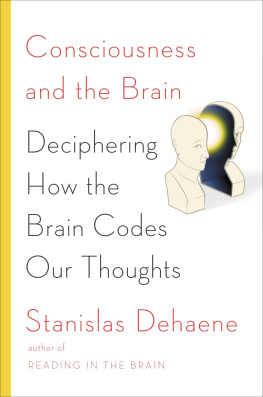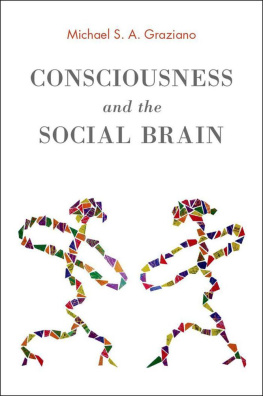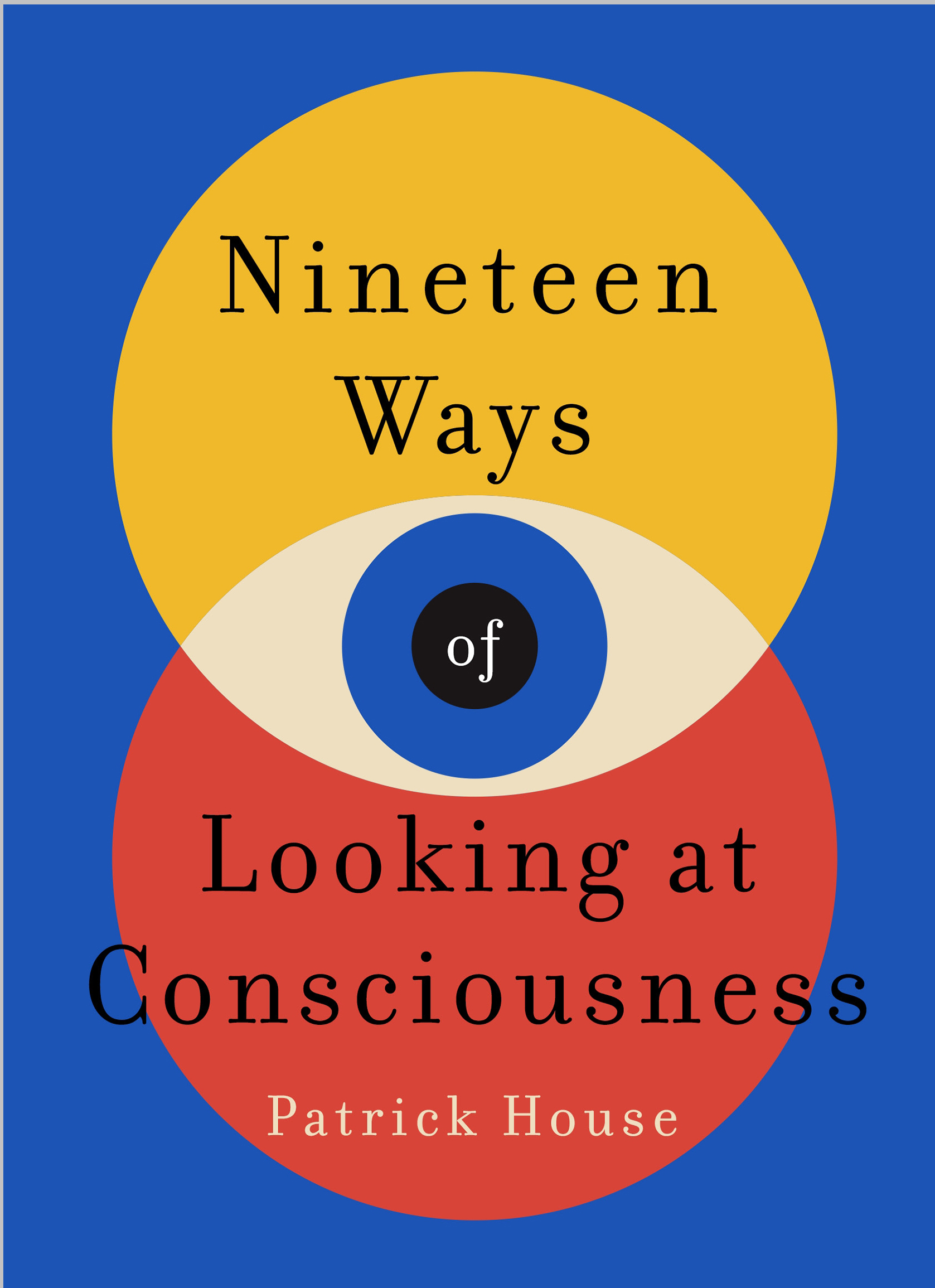Contents
Guide
Pagebreaks of the print version

The author and publisher have provided this e-book to you for your personal use only. You may not make this e-book publicly available in any way. Copyright infringement is against the law. If you believe the copy of this e-book you are reading infringes on the authors copyright, please notify the publisher at: us.macmillanusa.com/piracy.
To Claire Roscow (19882010),
Dr. Jonathan Leong (19832019),
and Cam Christie (19822020);
all, whose neurons turned in early
The movements of animals may be compared with those of automatic puppets, which are set going on the occasion of a tiny movement; the levers are released and strike the twisted strings against one another.
Aristotle, On the Motion of Animals
If I were asked to create, from scratch and under duress, a universal mechanism for passing consciousness from parent to child, I would probably come up with something a bit like grafting a plant. Each parent would donate a small piece of their brain and place it on some sort of growth medium, maybe some agar, or some flour with sugar and yeast, and the child would sort of just expand, like those water-absorbent foam dinosaur toys, into its final shape around the pieces of parental brain until it, too, was conscious. How else could it possibly work?
Instead, something much more remarkable happens in nature. An entirely new creature can grow into a fully conscious version of itself, and the entire process occurs, as if by fiat, anytime a certain kind of single cell with the right mix of nucleotide sugars is kept alive for long enough. Which means that consciousness is not something passed on or recycledlike single molecules of water, which are retained as they move about the earth as ice, water, or dewfrom one living creature to the next.
Instead, consciousness can be grown from scratch with only a few well-timed molecular parts and plans laid out. It is not drawn from a recycled tap of special kinds of cells or dredged from a vein of free will. No, the darn thing just grows. From its own rules. All by itself. And we have no idea how or why.
Despite this, most of the time, except to the philosophers and neuroscientists, there is no problem of consciousness. It seems to work just fine, almost effortlessly, which is a large part of its rarely questioned charm. One can have a full and vivid life without giving a second thought to the makings of the first. And yet, even though everybody knows what consciousness feels like, it remains central to the greatest unsolved scientific and existential mysteries we will probably ever face: What is it? And how did it get here?
This book is a collection of possible mechanisms, histories, observations, data, and theories of consciousness told nineteen different ways, as translations of a few moments described in a one-page scientific paper in Nature, published in 1998, titled Electric Current Stimulates Laughter. The idea is an homage to a short book of poetry and criticism, Nineteen Ways of Looking at Wang Wei, which takes the poem Deer Park by Wang Wei and analyzes nineteen different translations of it in the centuries since it was originally written.
Generally, though not in every case, each of the nineteen ways in this book promotes the idea that the brain evolved for, is itself, and will always be dedicated to movement. The best reason to start there is the simple, physical, and verifiable fact that a human brains only outputs are the muscles it connects to, whether the small ones that dart the eyes back and forth or the lumbering thigh muscles that kick-start a walk. No matter what goes into a brain, only movement ever comes out.
And though I believe that this is the correct starting point for understanding consciousnessthat it can be fully understood from the brains parts and their goalsthis starting point is by no means universally agreed upon. There are as many possible lenses to translate the details through as there are ways to hold a lens. Here, every chapter points toward an explanation for a few moments during the neurosurgery described in the Nature article, when a still-awake patient had her brain carefully prodded by an electrode capable of producing blasts of electricity and altering both her behavior and, arguably, her consciousness. Throughout this book, I will call the anonymous patient Anna. (Only her initials, A.K., are given in the original article.)
As a whole, the arguments and ideas in this book represent some of the most popular or plausible theories of how consciousness arises, works, feels, or degrades with use or error. Each chapter does not align neatly with any one theory or thinker, and some theories find their way into multiple chapters. In part, this is necessary because the many theories of consciousness today are as varied as the scientific fields they draw from, a funny quirk of human reason. For those studying the origins of life on the seafloor, for example, consciousness may be the natural interactions of pH, proton pumps, and evolved metabolic efficiency over time. But another theory, from someone who happens to know psychology and decision-making well, may be explained by lots of org-chart-style boxes and arrows. To those scientists who study attention, perhaps consciousness is the mathematical equivalent of a spotlight; to those who study eye movements, it might be the grand effort to cancel out self-generated movement; to those who study flies, it could be as probabilistic as a population of midges decision to go left or right or loop back on itself; to those who study songbirds, it might be the cognitive consequence of the rewiring of language-learning loops; and so on. There are, in other words, almost as many theories as there are thinkers out there.
I can be clear about my biases, too. I spent the better part of a decade doing laboratory research on a tiny parasite that infects mouse brains and maybe makes the infected host mouse prefer the smell of cat urine just a little bit more than they had before. Thus, I am a mind-control parasite guy. I think in host-parasite terms and relations. I think of free will as something like a rivers current with a natural direction and kind of physics to it, which also can, under the right conditions, be redirected. However, as with Wang Weis original poem, which is lost to history, I believe there is still a way to inch closer to an unknowable truth, guided by the sense that one is on the right track.
For this reason, some chapters are explanations of consciousness as a single allegory, comparing the evolution of consciousness with the evolution of the game of pinball (chapter 2) or even to a small town (chapter 10). Other chapters base the explanation on the latest scientific research into how a brain controls a bodys movement (chapters 3 and 17) or on how consciousness arises from waves of electrical activity (chapter 4), language learning (chapter 12), causal power (chapter 14), or efficient compression of information (chapter 11).
Some chapters seek explanations in the physics of temperature and prediction (chapter 8) or in the quantum realm (chapter 15). Others propose that the best clues are found in the minds of learning robots (chapter 18) or in the mind of a cat with thousands of toes, should she lose some of them (chapter 16).
Others consider why removing parts of the brain changes some aspects of self but not all of them (chapter 13) or how and why a conscious brain is often telling itself fictions (chapter 1). Some consider whether the brain is more like a simulation (chapter 6) or a radio broadcast (chapter 9) with networks in the brain the receiving antennae. Others take issue with the very idea of theorizing about consciousness and defining its terms (chapters 7 and 19) or wonder what answer humanity would give if forced (chapter 5).


